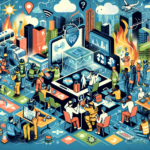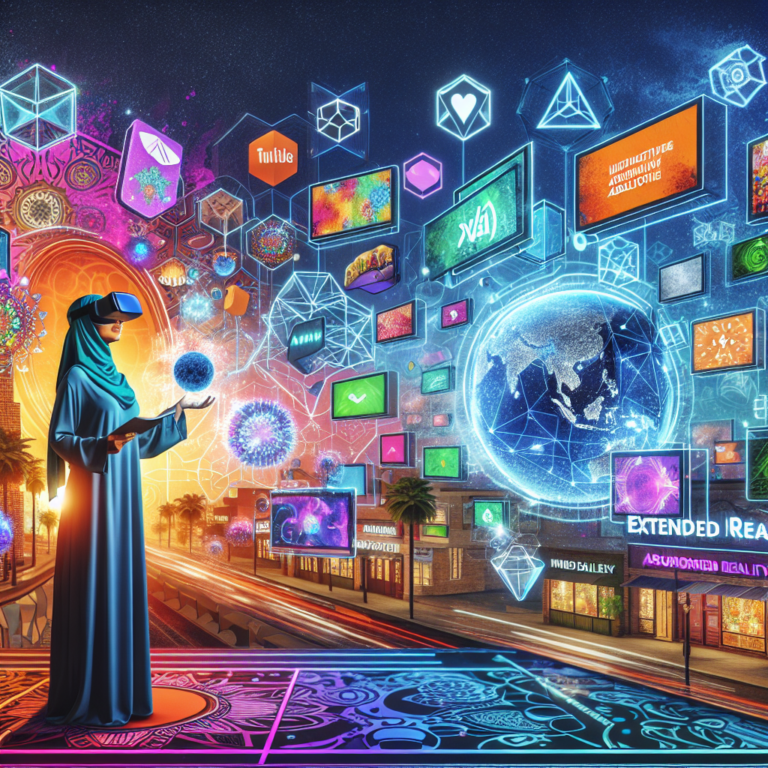Unleashing the Future: How XR is Revolutionizing Traditional Advertising Strategies
Understanding XR: The New Frontier of Advertising 🌐
Extended Reality (XR), which encompasses Virtual Reality (VR), Augmented Reality (AR), and Mixed Reality (MR), is not just a fleeting trend; it’s a powerful force reshaping the landscape of advertising. With the ability to create immersive experiences, XR is capturing the attention and imagination of consumers like never before. Let’s dive into how XR is disrupting traditional advertising strategies and paving the way for innovative campaigns that truly engage audiences.
The Shift from Passive to Active Engagement
Traditional advertising often relies on a passive viewing experience, where audiences merely absorb information. However, XR transforms this approach into an interactive journey. Here’s how:
- Immersion: XR allows brands to create environments where customers can actively participate, leading to higher levels of engagement.
- Gamification: By incorporating game-like elements, XR makes brand interactions more enjoyable, leading to increased customer retention.
- Instant Feedback: Through real-time interactions, brands can gather immediate feedback from consumers, allowing them to pivot strategies effectively.
Personalization at Scale: A Game Changer for Brands
One of the most significant advantages of XR is its ability to personalize the user experience. Modern consumers crave tailored experiences that resonate with their interests and preferences. XR facilitates this by:
- Data Utilization: Brands can harness data analytics to create personalized XR experiences that address specific consumer needs.
- Dynamic Content: XR environments can change in real-time based on user interactions, ensuring that each experience feels unique.
- Emotional Connection: Personalization fosters a sense of connection, making consumers more likely to form positive associations with a brand.
Innovative Campaigns: Bold Moves in Advertising 🌟
Gone are the days when advertisements were limited to static images or simple video ads. With XR, advertisers are crafting adventurous campaigns that push boundaries. Here are a few innovative examples:
Virtual Product Trials 🙌
Imagine trying on clothes virtually or testing makeup products before purchasing—this is now a reality. Companies like Sephora and Nike have embraced AR technology, allowing customers to visualize how a product will look on them in their own environment before making a decision. This not only enhances customer experience but also reduces return rates significantly.
Interactive Storytelling 📖
Brands are also leveraging XR for storytelling, creating narratives that invite customers into their brand’s journey. For instance, The North Face showcased a VR experience that took users on a breathtaking journey through the mountains, effectively communicating their brand ethos and inspiring adventure. This type of immersive storytelling captivates audiences, leaving a lasting impression.
Augmented Billboards and Ads 🏙️
Augmented reality billboards are taking over urban landscapes, creating a blend of physical and digital experiences. Brands can create eye-catching, interactive advertisements that compel passersby to engage through their smartphones. This not only enhances visibility but also sparks conversation and sharing across social media platforms.
Building Brand Loyalty through XR Experiences
In today’s competitive marketplace, building brand loyalty is paramount. XR offers unique ways to achieve this:
- Exclusive Experiences: Brands can create limited-time XR events, encouraging customers to participate and explore in real-time, fostering a sense of community.
- Reward Programs: Implementing XR in loyalty programs adds a layer of excitement, where customers can earn rewards through interactive challenges.
- Long-term Engagement: Ongoing XR content and experiences keep customers returning, cultivating a loyal customer base that feels connected to the brand.
Challenges and Considerations for Brands
While XR is a powerful tool for advertising, there are challenges that brands need to navigate:
- Cost of Implementation: While technology costs are decreasing, creating high-quality XR experiences can still be a significant investment.
- Content Creation: Crafting engaging XR content requires expertise in both technology and storytelling, demanding collaboration among diverse teams.
- User Accessibility: Not all consumers have access to high-end devices needed to experience XR, potentially limiting reach.
The Future of Advertising: A Bright XR Horizon 🌈
The potential of XR in advertising is vast, with technology continually evolving to meet the needs of consumers. As brands embrace XR, they not only enhance consumer engagement but also refine their strategies to become more adaptive and resilient. The beauty of XR lies in its versatility; it can amplify any brand’s voice and offer memorable, impactful experiences that consumers genuinely appreciate.
As we move forward, it’s clear that XR isn’t just a tool; it’s a revolution in the advertising landscape. By embracing this technology, brands can differentiate themselves, stay relevant, and capture the hearts of consumers in ways we are just starting to imagine. Are you ready to explore the limitless possibilities that XR has to offer for your brand?




0 Comments